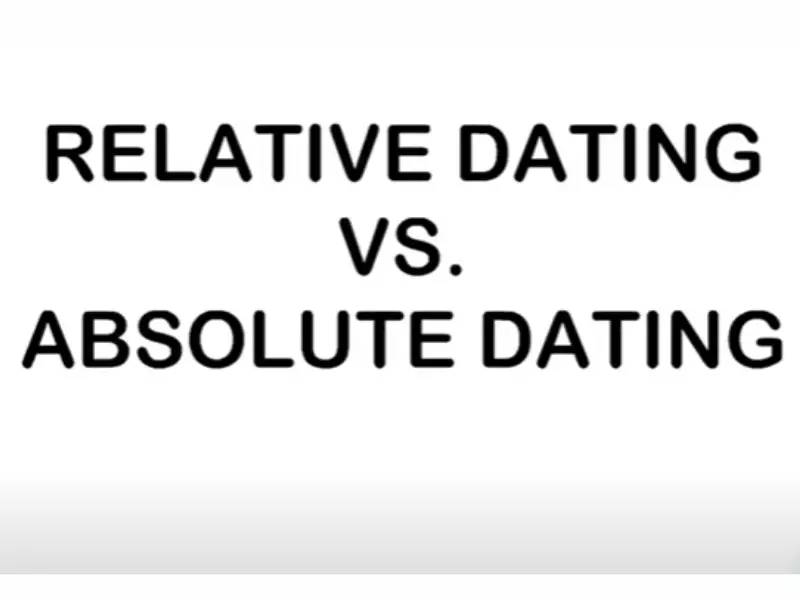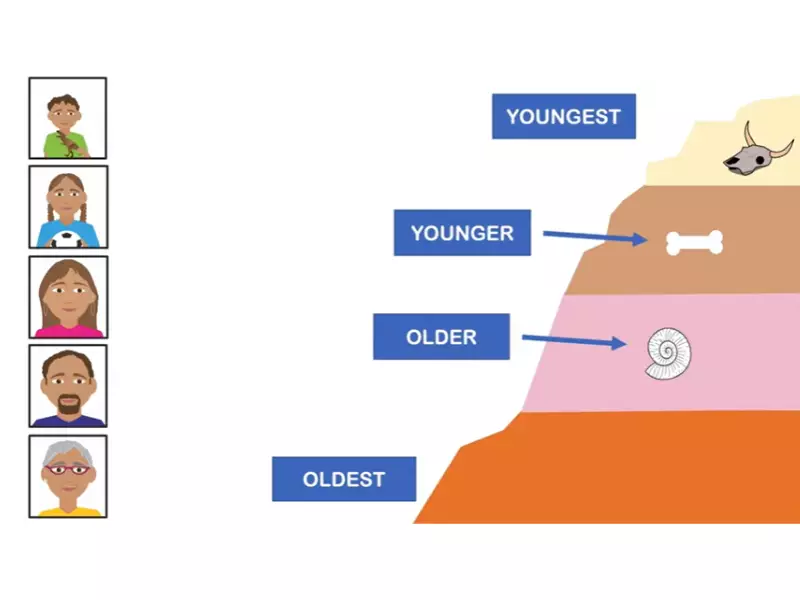Dating methods in geology are crucial for understanding Earth’s history and the timing of geological events. These methods allow scientists to unravel the story of Earth’s past, from the formation of the planet to the evolution of life and the landscape as we see it today. By dating rocks, fossils, and sediments, researchers can construct a timeline of Earth’s history.
The difference between relative dating and radiometric dating lies in their approaches and accuracy. Relative dating places events in sequence, without providing numerical dates, using techniques such as the law of superposition and index fossils. Radiometric dating, on the other hand, provides absolute ages for rocks and fossils by measuring the decay of radioactive isotopes within them. This method offers a more precise age estimate, allowing for a detailed reconstruction of Earth’s history.
Relative dating serves as a foundational tool in geology, providing a sequence of events and establishing the relative age of geological formations. Radiometric dating adds numerical precision to this framework, offering exact ages and enabling detailed chronologies. Together, these methods provide a comprehensive view of Earth’s geological timeline, revealing the processes that have shaped the planet over billions of years.

Dating Fundamentals
Understanding the age of geological formations and fossils is crucial for studying Earth’s history. This section covers the basics of relative dating and radiometric dating, the two primary methods used by scientists to determine the age of rocks and fossils.
Relative Dating
Definition and Principles
Relative dating is a method used to determine the sequence of events that occurred to form geological structures. Instead of providing exact numerical dates, it places rocks and geological features in a chronological order based on their physical relationships. The core principles behind relative dating include:
- Law of Superposition: In undisturbed sedimentary rock layers, the oldest layer is at the bottom, with each layer above being younger.
- Principle of Original Horizontality: Layers of sediment are originally deposited horizontally under the action of gravity.
- Principle of Cross-Cutting Relationships: A geological feature that cuts across another feature must be younger than the feature it cuts.
Key Techniques and Examples
Several techniques underpin relative dating, such as:
- Stratigraphy: Analyzing the sequence of rock layers or strata.
- Fossil correlation: Using fossils to correlate the age of rock layers across different locations.
For instance, by identifying and comparing fossil assemblages within different rock layers, scientists can establish a relative timeline across vast geographic areas.
Radiometric Dating
Definition and Principles
Radiometric dating is a method that uses the decay of radioactive isotopes within rocks and fossils to calculate their exact age. This technique is based on the principle that certain naturally occurring isotopes are unstable and decay at a constant rate over time to form stable isotopes. The rate of decay, known as the half-life, is unique to each radioactive isotope.
How It Works: Isotopes and Half-Life
The process of radiometric dating involves measuring the ratio of parent (radioactive) isotopes to daughter (stable) isotopes in a sample. The key steps include:
- Identifying the radioactive isotope suitable for dating the sample based on its age and the material’s properties.
- Measuring the isotopes: Using sophisticated instruments to measure the ratio of parent to daughter isotopes.
- Calculating the age: Applying the known half-life of the isotope to calculate the time it took for the original amount of the parent isotope to decay to the measured amount.
Comparative Analysis
Basis of Comparison
When comparing relative and radiometric dating, several factors come into play, such as:
- Methodology and Approach: Relative dating sequences events, while radiometric dating quantifies age.
- Materials Used for Dating: Relative dating primarily uses rock layers and fossils, whereas radiometric dating requires specific isotopes present in the sample.
Accuracy and Precision
The accuracy of radiometric dating significantly surpasses that of relative dating due to its reliance on measurable physical processes. Relative dating, while invaluable for outlining a sequence of events, often lacks the precision to assign specific ages.
Limitations of Relative Dating
The main limitations of relative dating include:
- Indirect age assessment: Only provides a sequence of age without precise numerical dates.
- Dependence on undisturbed layers: Disturbances in sediment layers can complicate the sequence.
Advantages of Radiometric Dating
Radiometric dating offers distinct advantages:
- Precise age determination: Can calculate exact ages of rocks and fossils.
- Applicable to a wide range of materials: Useful for dating very old to relatively recent samples.
Application Scope
Situations Favoring Relative Dating
Relative dating is favored in situations where:
- Rapid, cost-effective analysis is needed.
- Radiometric dating is not feasible due to the absence of suitable isotopes.
Domains Relying on Radiometric Dating
Radiometric dating is essential in domains requiring precise age estimates, such as:
- Determining the age of ancient rocks and geological events.
- Calibrating the geological time scale with high precision.

Advantages and Limitations
In the quest to unravel Earth’s history, relative dating and radiometric dating stand out as two fundamental approaches, each with its own set of advantages and limitations. Understanding these can help in selecting the most appropriate method for geological or paleontological investigations.
Relative Dating Pros and Cons
Cost-effective and Simple
One of the most significant advantages of relative dating is its cost-effectiveness and simplicity. Unlike radiometric dating, it does not require sophisticated equipment or extensive sample preparation. Scientists can often conduct field studies and make observations using basic geological principles. This makes relative dating particularly useful in preliminary studies or in situations where resources are limited.
Limitations in Accuracy
However, the primary limitation of relative dating is its lack of precision in determining exact ages. It can tell us which rock layer is older or younger but cannot pinpoint the exact number of years that have passed. This can be a significant drawback when precise chronological data is necessary for the study.
Radiometric Dating Pros and Cons
High Accuracy and Precision
Radiometric dating’s main advantage is its ability to provide high accuracy and precision in age determination. By measuring the decay of radioactive isotopes, scientists can calculate the age of a rock or fossil in years. This method has revolutionized our understanding of Earth’s history, allowing us to date events that happened millions or even billions of years ago with remarkable precision.
Technical Complexity and Costs
The downside of radiometric dating lies in its technical complexity and the associated costs. The process requires advanced equipment, such as mass spectrometers, and skilled technicians to perform the analyses. Moreover, certain types of rocks and fossils are required for radiometric dating, which may not always be available. The preparation and analysis process can also be time-consuming and costly, making it less accessible for some projects.
Choosing the Right Method
Selecting the most suitable dating method depends on several factors, including the type of material available, the age range of interest, the resolution required, and the resources at hand. Here are some considerations:
Factors Influencing the Choice
- Material Type: Some materials are more suited to one method over the other. For example, volcanic ash layers can often be radiometrically dated, whereas sedimentary rock layers might be more amenable to relative dating techniques.
- Age Range: Radiometric dating is generally more useful for dating older materials, whereas relative dating might be sufficient for younger geological formations.
- Resolution Required: If precise age determination is crucial to the study, radiometric dating is the preferred method.
- Available Resources: The choice may also be influenced by the available budget and equipment.
Case Studies: Applying Both Methods
- The Grand Canyon: An exemplary case where both methods have been used to understand its geological history. Relative dating methods, such as examining rock layers and fossil sequences, provided a basic framework of the canyon’s geological timeline. Radiometric dating, particularly of volcanic ash layers found within the sedimentary rock layers, has allowed scientists to assign precise ages to these formations, enhancing our understanding of the canyon’s development over millions of years.
- Dinosaur Fossils: In the field of paleontology, determining the age of dinosaur fossils often requires a combination of both relative and radiometric dating. Relative dating can place fossils in a sequence based on their stratigraphic position. In contrast, radiometric dating, applied to volcanic layers above or below the fossil-bearing strata, can provide a more precise age for the fossils.
- Ancient Human Tools: Archaeologists often employ both dating methods when studying early human sites. For instance, the age of tools found in sedimentary layers can be estimated using relative dating principles. At the same time, radiometric dating can be used on volcanic ash layers or other datable materials associated with the tools, providing a more exact timeline of human activity.
Frequently Asked Questions
What is relative dating?
Relative dating is a method used by scientists to determine the sequence of events in Earth’s history without providing an exact age. It relies on principles such as the law of superposition and the presence of index fossils to establish a relative age sequence of rocks and geological features.
How does radiometric dating work?
Radiometric dating measures the decay of radioactive isotopes within rocks and minerals to determine their exact age. This method is based on the known rates of decay of these isotopes into stable products, providing a clock that starts ticking when the rock forms.
Why is radiometric dating more accurate than relative dating?
Radiometric dating is considered more accurate than relative dating because it provides a specific numerical age for rocks and fossils. This precision comes from measuring the decay of radioactive isotopes, which occurs at a predictable rate, allowing scientists to calculate the time elapsed since the rock or fossil formed.
Can relative and radiometric dating be used together?
Yes, relative and radiometric dating methods are often used together to create a more complete and accurate picture of Earth’s history. Relative dating establishes a sequence of events, while radiometric dating adds numerical ages to this framework, enhancing our understanding of geological time.
Conclusion
The integration of relative dating and radiometric dating techniques has revolutionized our understanding of Earth’s history. By combining the sequence of events established by relative dating with the precise numerical ages provided by radiometric dating, scientists have constructed a detailed timeline of geological events that tells the story of our planet. This comprehensive approach allows for a deeper insight into the processes that have shaped Earth over billions of years.
In summary, while each method has its strengths and limitations, the combined use of relative and radiometric dating has provided a robust framework for deciphering Earth’s history. This synergy underscores the importance of diverse scientific methods in reconstructing the past, enabling us to appreciate the complexity and dynamism of the planet we call home.
